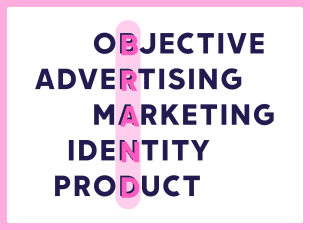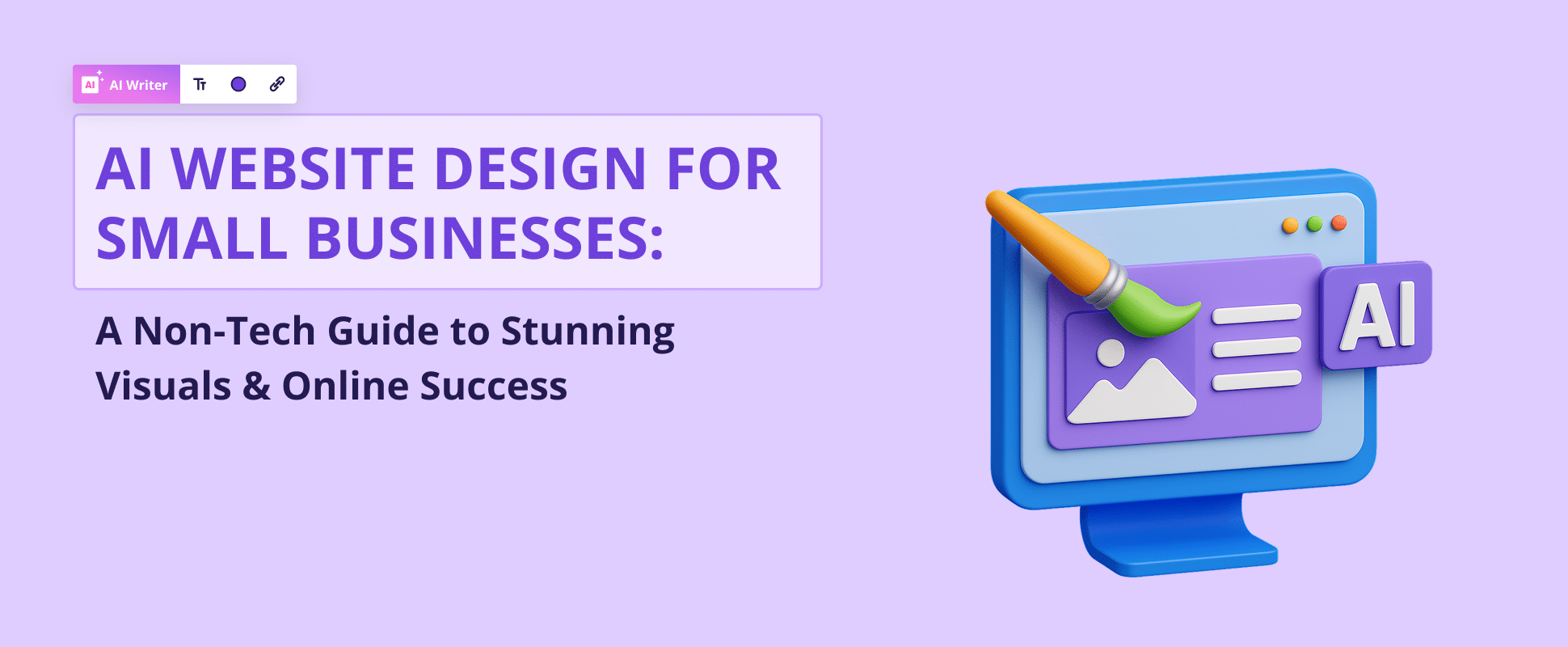Like it or loathe it, social media has ingrained itself into our daily lives. Platforms like Instagram and Facebook have transformed how companies advertise their goods and services.
With millions of people using social media platforms daily, it’s the perfect place to reach your audience, build brand awareness, and grow your business.
In theory, it’s never been easier for a small business to reach its target market. However, the reality is that new technologies have also made it a much more competitive world, meaning your business has to work even harder to stand out from the crowd.
Today we’ll explore the importance of social media marketing for small businesses and provide you with a step-by-step guide to developing a successful social media marketing plan for your small business. We’ll also share tips and tricks to help you achieve success.

Why Social Media Marketing is Important for Your Small Business
A Social media strategy is super important in the world of small business marketing, as it offers a unique opportunity to connect with customers and show off your products and services in a cost-effective way.
You might wonder why social media marketing is so vital for your small business, so let’s dive into the 3 key benefits it provides.
1. Building Brand Awareness
With millions of users actively engaging on social media platforms every day, it’s an excellent opportunity for small businesses to:
- build awareness around their unique brand identity.
- attract potential customers.
When building brand awareness, consistency in your brand’s message, visuals, and tone is key. By developing a recognizable brand voice and identity, you can create a lasting impression on your audience, encouraging them to engage with your content and, ultimately, your business.
A real-world example of building brand awareness through social media posts is the popular fitness app Sweat. The Sweat brand began as a series of Instagram posts featuring workout routines, motivational quotes, and healthy eating tips.

By consistently sharing valuable content tailored to their target audience, Sweats following grew exponentially. Leveraging social media and influencer marketing meant they were able to turn a personal brand into a successful fitness app and global community.
By sharing valuable content and engaging with your audience, you can create a strong connection with your customers and establish your brand as an authority in your industry.
2. Engaging with Customers
One of the most important benefits of social media strategy for small businesses is the ability to engage directly with customers.
This goes beyond simply promoting your products or services; we’re talking about meaningful conversations with your audience where you can address their concerns, answer questions, and gather valuable feedback.
By interacting with your customers on your social media channels, you can foster a sense of community around your brand, build trust, and create long-lasting relationships.
A brand that is well-known for engaging with customers on various social media networks is PayPro Global. They’ve gained a strong reputation for their customer-centric approach on platforms like Twitter, Facebook, and LinkedIn.

They actively respond to customer inquiries and comments, often with personalized messages and valuable insights. Additionally, they regularly share super informative content on social media channels which helps build credibility and trust with their audience.
By engaging with customers in a genuine, helpful, and transparent manner, small businesses can establish strong relationships with their audience, leading to increased brand loyalty and long-term success.
3. Cost-Effective Marketing
Having a social media strategy is an incredibly cost-effective way for small businesses to market themselves, particularly when compared to traditional marketing channels like print, radio, or television.
Most social media platforms offer free accounts, allowing businesses to create and share content with their audience without massive costs. Also, organic reach on a social media site can drive huge engagement and traffic to your business, reducing the need for expensive advertising campaigns even more.
Let’s look at the fitness apparel and accessories brand Gymshark for example. Founded in 2012 with a limited budget, Gymshark turned to social media platforms like Instagram and YouTube to promote their products and engage with their audience.
By working with fitness influencers and athletes who showcased the brand’s products in workout videos, tutorials, and lifestyle content, Gymshark reach a larger audience while also positioning the brand as an integral part of the fitness community.
With social media, small businesses can maximize their marketing efforts without breaking the bank, making it an essential part of any modern marketing strategy.

Essential Elements of a Social Media Marketing Plan

So now we’ve seen the benefits, let’s discuss the details; here’s where we’ll take a look at the essential elements that make up a successful social media marketing plan.
Soon you’ll be well-equipped to navigate the ever-changing landscape of social media and create a powerful online social presence just for your business.
So, let’s dive in and explore the building blocks of a winning social media marketing strategy!
Setting Clear Goals and Objectives
Before you embark on your social media journey, you need to set clear goals and objectives that guide your efforts; otherwise, you’re just wasting time.
These could include things like increasing brand awareness, driving website traffic, generating leads and sales, or even building customer loyalty and engagement.
Setting clear goals and objectives will:
- Help you build a focused and targeted strategy, making sure your marketing efforts are aligned with your business objectives.
- Allow you to create content that interests or excites your target audience, addressing their wants and needs.
- Let you measure the success of your social media campaigns, giving you valuable insights into areas for improvement and growth.

When working out your social media marketing goals, consider adopting the SMART framework, that your objectives are Specific, Measurable, Achievable, Relevant, and Time-bound.
This approach not only helps you create actionable goals but also helps you monitor your progress effectively, making data-driven decisions to optimize your social media marketing strategy further.
By setting clear goals and objectives from the start, you’ll be well-prepared to navigate the online world of social media and establish a powerful online presence for your business.
Choosing the Right Social Media Platforms
Not all social media platforms are born equal or built for everyone. You must research each platform’s user demographics, features, and functionality to work out which ones align with your audience and business goals.
Selecting the right platforms for your marketing efforts is essential when trying to reach the right people or for using the platforms’ unique features effectively.
It’s also important to consider the time and resources you have available to manage your social media presence, as each platform requires a different level of commitment and content creation.

For example, Twitter demands frequent updates and engagement, while others like Instagram or LinkedIn are a little more relaxed about their posting schedules. Work out which platforms best fit your resources and marketing strategy.
Also, keep in mind that it’s often better to focus on a few platforms and excel in those rather than trying to maintain a presence on every available platform. This will let you create a more engaging and effective social media marketing strategy that yields better results in the long run.
Creating High-Quality Content
To stand out on any social platforms, you’ll need to create high-quality, engaging content that captures your audience’s attention.
Focus on providing value to your followers by sharing informative, entertaining, or inspiring content that meets their interests and needs. This approach helps to build a loyal community around your brand and encourages social sharing, further boosting your reach.
Consider a mix of content types, such as images, videos, articles, and interactive posts to cater to different audience preferences and keep your followers engaged. Experiment with various formats like live streaming, stories, or even user-generated content to keep your content strategy fresh and your audience interested.

Also, make sure your content is consistent with your brand’s voice, style, and messaging to reinforce brand identity and build trust among your audience. Consistency in tone, visuals, and messaging across all content types helps to create a cohesive brand experience that resonates with your followers, making your business more memorable and recognizable.
By investing time and effort into crafting high-quality content, you can effectively make your brand stand out from the competition and build a strong, lasting connection with your target audience.
Posting Consistently and at the Right Times
To maintain a strong social media presence, you need to post consistently and at times when your audience is most active. Creating a consistent posting schedule not only helps keep your audience engaged but also signals to the social network algorithms that your content is relevant and valuable, potentially boosting your visibility on the platform.
Here are some things to consider when creating a posting schedule:
|
|
|
4. Automation and Scheduling Tools: Use social media scheduling tools to automate and streamline your posting process. Many of these tools also provide analytics and insights that can help you refine your posting schedule and content strategy.
Regularly analyze your social media performance and adjust your strategy as needed to ensure you’re achieving your social media goals well.
5 Tips and Tricks for Creating a Successful Social Media Marketing Plan

As a small business owner wandering out into the world of social media, you might be eager to discover some helpful tips and tricks to get you started on the right foot.
Here we share five valuable insights that can guide you in creating a successful social media marketing plan. So, let’s dive in and explore these game-changing social media strategies!
1. Use a Mix of Content Types

Diversify your content by including a mix of images, videos, articles, and interactive elements like polls or quizzes. This will keep your audience engaged and encourage them to interact with your content.
It’s also a good idea to consider experimenting with various content formats, such as live streams, stories, and user-generated content. This lets you cater to different audience preferences and maintain interest.
By offering a diverse content mix, you can better address the needs of your audience and make sure that your social media presence remains fresh and appealing.
2. Engage with Your Audience

Make sure you respond to comments, messages, and mentions ASAP. This shows your audience that you value their input and helps build a strong community around your brand.
Also, actively participate in relevant conversations, ask for feedback, and show appreciation for user-generated content or brand advocates.
By building a genuine connection with your audience on social channels, you can create a loyal fan base that is more likely to engage with and share your content, ultimately boosting your brand’s visibility.
3. Leverage Influencers and Partnerships

Collaborate with influencers and other businesses in your industry to reach a larger audience and gain credibility. This could include hosting joint events or featuring guest posts on each other’s own social media sites and accounts.
By leveraging the power of influencers and strategic partnerships, you can tap into their established audiences, enhance your brand’s reputation, increase brand awareness, and amplify the reach of your marketing efforts.
Be sure to choose partners whose values and audiences align with your own to ensure a successful collaboration.
4. Utilize Social Media Advertising
Consider using social media advertising to reach a larger audience and achieve specific goals, such as driving website traffic or increasing sales.
Most platforms offer various targeting options, allowing you to reach the right audience with your ads.
Experiment with different ad formats, such as carousel ads, video ads, or sponsored posts, to work out which ones resonate best with your target audience.
Additionally, monitor and analyze your ad performance so you can optimize your campaigns and ensure you’re getting the best return on investment.

5. Monitor the Competition
Keep an eye on your competitors to identify trends and learn from their successes and failures. This can help you refine your own social media marketing strategy and stay ahead of the competition.
Regularly analyze their content, engagement levels, and follower growth to gain insights into what works and what doesn’t in your industry. Use this information to improve your own marketing efforts, adopt successful tactics, and avoid potential pitfalls.
By staying informed about your competition, you can make data-driven decisions and maintain a super competitive edge in your industry.

Conclusion
Building a winning social media strategy and marketing plan for your small business is essential in today’s digital landscape. By setting clear goals, identifying your audience, choosing the right platforms, and creating engaging content, you can build a strong online presence that helps your business grow.
Don’t forget to analyze your performance and make adjustments as needed, and be sure to utilize the tips and tricks provided in this article to achieve success.
In the meantime, you should consider complementing your efforts with a tailor-made website, as social media alone isn’t enough to support a growing business. After all, you don’t need time, money, or tech skills to create your online store with Hocoos Al website builder.
Why?
Because with Hocoos, it only takes 5 minutes to build your free business website.
How?
With Hocoos. Our Al wizard asks you 8 quick questions about your business. It then builds a complete website before your very eyes by using your answers to create everything, including custom content.
Think about it. In the time it took to read this article, you could have created an entire website. Right now, you could be editing your site, adding products, or describing services.
All it takes is a good idea and a little help from the Hocoos AI website-building wizard, and then who knows what tomorrow could bring?
Elevate your online presence with the perfect combination of a winning social media strategy and an AI-powered website from Hocoos.
Frequently Asked Questions
How often should I post on social media?
The ideal posting frequency depends on your audience, the platforms you’re using, and your specific goals. Generally, it’s best to post at least once per day on platforms like Facebook and Instagram and multiple times per day on Twitter.
How do I measure the success of my social media marketing efforts?
Key performance indicators (KPIs) can help you measure the success of your social media efforts. Some common KPIs include engagement rate, reach, impressions, clicks, and conversions.
What types of content work best for social media marketing?
The most effective content types will depend on your audience and industry. However, visually appealing content, such as images and videos, generally performs well on most platforms.
How can I increase my social media following?
To increase your following, focus on creating high-quality, engaging content that resonates with your audience. Be consistent with your posting schedule, interact with your audience, and consider collaborating with influencers or other businesses in your industry.
Should I use automation tools for my social media marketing?
Automation tools can be helpful for scheduling content, monitoring analytics, and managing multiple social media accounts. However, it’s essential to maintain a personal touch with social media management tools by actively engaging with your audience and not relying solely on automation.
FOLLOW us

















